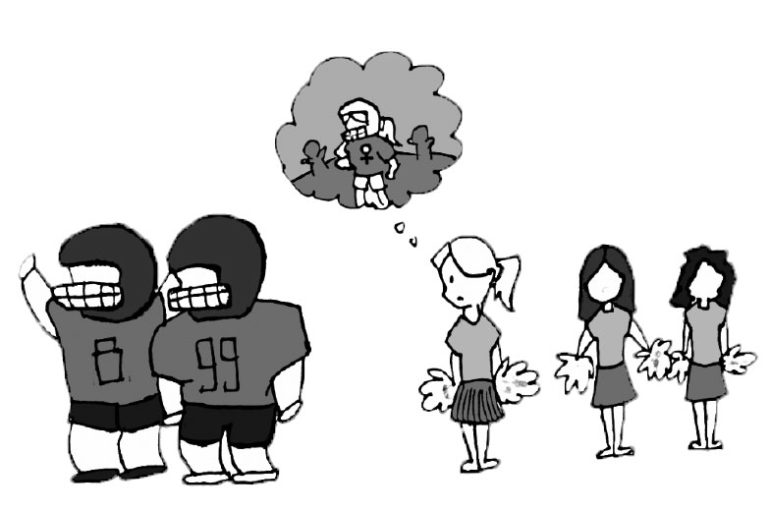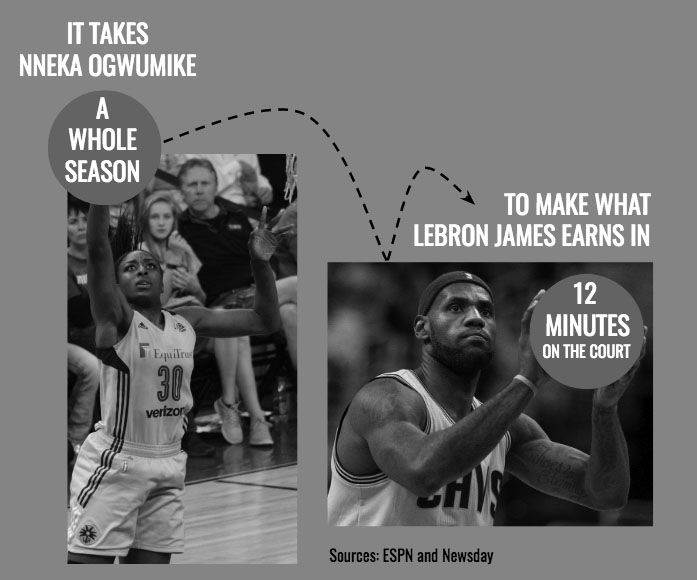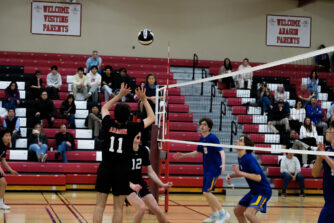
TITLE IX

Congress enacted Title IX during Richard Nixon’s presidency as a portion of the Education Amendments of 1972. Title IX protects individuals from discrimination based on sex in education programs and activities that receive federal funding. The enactment brought on a surge of female participation in sports, providing women with many opportunities to get involved in athletics on a both a recreational and professional level.
Ann Kiyomura, 1975 Wimbledon doubles champion, graduated from Aragon in 1973. Until Title IX was passed in Kiyomura’s senior year, Aragon didn’t have a girls tennis team. However, one of Kiyomura’s teachers at Aragon allowed her to practice with the boys tennis team.
“[The team] was very accepting, and they were my classmates, too. These boys knew I played tennis and I wasn’t out there to beat them,” she explains. “It was just to play and have some fun. But at the same time, the opportunity was not there for me to be a part of a girls team.”
Following the enactment of Title IX, the Women’s Tennis Association (WTA) was formed in 1973. Kiyomura turned pro the year she graduated and continued to play professionally until 1984. During her career, Kiyomura played WTA founder Billie Jean King five times, defeating her twice.
In Sept. 1973, King played former male tennis star Bobby Riggs — who declared himself a “chauvinist pig” — in a nationally televised match known as the “Battle of the Sexes.” King defeated Riggs 6-4, 6-3, 6-3 and received the winner-take-all prize of $100,000.
“All along, the women were trying to show that they were as big a draw [for audiences] as the men and that they deserve equal pay or equal prize money,” explains Kiyomura. ”[It] was something we had to just prove, that the women can play tennis as well as the men … ”
For King, a women’s activist, the match meant more than prize money or simply beating Riggs. King felt strongly about equal pay for men and women, and she wanted more respect for female athletes from men.
“Billie Jean was a pioneer … that’s the bottom line,” says Kiyomura. “She loved the sport so much that she wants to help make opportunities for everyone, especially for women and young girls.”

LeFevre recalls her experience joining the Hillsdale team: “When I decided to try out for football, the coach [Mike Parodi] didn’t look at the braids in my hair, he just got four footballs, placed me on the [field] and said ‘kick.’ ”
Since the enactment of Title IX in 1973, female participation in high school sports has gone from 3.7 percent of girls playing an interscholastic sport to 40 percent, making it clear progress has been made in giving women the opportunity to participate in athletics. However, the gap between men and women in sports is still very much existent.
Though Parodi did not treat her any differently for being the only girl on the team, LeFevre initially experienced a negative response from her classmates.
“I was always trying to prove myself. A lot of the boys and some coaches thought I was there for the wrong reasons,” says LeFevre. “I wasn’t looked at as someone who just wants to play football, but as a girl who wants to play for the guys.”
SPORTS STEREOTYPES
Despite the supposed equality in sports, societal norms often create a different standard for female participation. Because of Title IX, girls and boys must be allowed to participate in all school sports, regardless of gender. However, certain sports, such as cheer leading and football, are still perceived more “feminine” or more “masculine.”
In the United States, only 0.1 percent of football players are girls. Football has long been a male-dominated sport; and although girls technically have the opportunity to join a football team, many opt for a different athletic activity.
Nonetheless, even in sports commonly played by both men and women, such as tennis or basketball, gender inequality is still present.
WAGE GAP
Players in the Women’s National Basketball Association are not paid anywhere close to as much as players in the National Basketball Association (WNBA). For example, reigning WNBA MVP Nneka Ogwumike earned $109,000 in 2016. LeBron James, the reigning NBA Finals MVP, has a yearly salary of $30.96 million. It only takes James 13.9 minutes on the court to earn Ogwumike’s season salary.
However, it should be considered, when comparing the wages of WNBA players and NBA players to acknowledge, that the NBA generates far more revenue than the WNBA. The NBA is able to pay its players significantly more than the WNBA because the NBA has more viewers and a larger fanbase.
“It’s all driven by the market. If 50,000 people wanted to buy season tickets to a WNBA team and they only had a 20,000 seat stadium, they could charge top dollar for the ticket and players would get top dollar for their performance,” explains Larios.
Larios notes the difference in supply and demand, which plays a crucial role in the price of tickets, and thus, the revenue generated by the league.
For example, Oracle Arena, home to the Golden State Warriors, has 19,596 seats. However, the Warriors have a season ticket waitlist of over 37,000 people.
Because there is a high demand for these tickets, and not nearly enough seats are in the stadium to satisfy this demand, the price of the tickets can be, and are, raised.
The cheapest Warriors tickets for the least-popular games tend to sell for anywhere between $80 and $100 on Stubhub. On the other hand, the Los Angeles Sparks, the 2016 WNBA champions, play at the Staples Center, which can hold 21,000 fans, but closes off the upper level for Sparks games, capping out at 13,141 people. However, the Sparks do not have a waitlist for tickets; their demand is less than their supply, meaning they cannot charge the same ticket prices as the Warriors and therefore cannot generate nearly as much revenue.

There is no one true answer to this question, but different theories exist. Three out of every four men would consider themselves sports fans, while only one in two women consider themselves fans. On the other hand, there is the theory that men’s sports are played at a higher level as a result of physical capabilities.
Though he does not agree with the idea, Larios believes this impression may be the reason that men’s sports attracts more viewers: “I think there is a theory that [men] are more competitive, more physical, more skilled. That’s the perception.”
The media coverage and fan base of men’s sports create a positive feedback loop. Men’s sports have a larger following than women’s sports; therefore, there is more media coverage of men’s sports. As a result of this coverage, more people are updated with what is going on in men’s sports, and men’s sports increase in popularity. This increased popularity produces more viewers for men’s sports, thus perpetuating an endless cycle.
As a result of this increased popularity, more often than not, if one turns on a sports channel, one will see men playing a game, not women. If one looks at the name of a sports team on athletic websites, such as MaxPreps, one will see “Women’s Soccer Team,” for the name of the women’s team, but simply “Soccer Team,” for the men’s. It’s subtle differences like these that have become normalities in society, and contribute to public perception gap and the gender gap in sports.
Seeing what little media coverage female athletes receive, how they are covered is extremely important. Sports Illustrated serves a harmful role in said coverage. Since 1964, women have been featured in the Sports Illustrated Swimsuit edition, and many issues have included female athletes, including United States Women’s National Soccer Team star Alex Morgan, martial artist Ronda Rousey, and No. 2 women’s tennis player Serena Williams.
In this yearly issue, women are converted from strong athletes to sexualized objects. Unlike most male athlete coverage in Sports Illustrated, often attention to female athletes is not focused on their athletic skill and achievements, but rather their physical appearance.
Though the passing of Title IX created the opportunity for more women to participate in athletics, many societal norms and public perceptions continue to segregate male and female athletics. Though the United States has made significant progress in the efforts to achieving gender equality, it still has a long ways to go before “playing like a girl” is considered a compliment.



